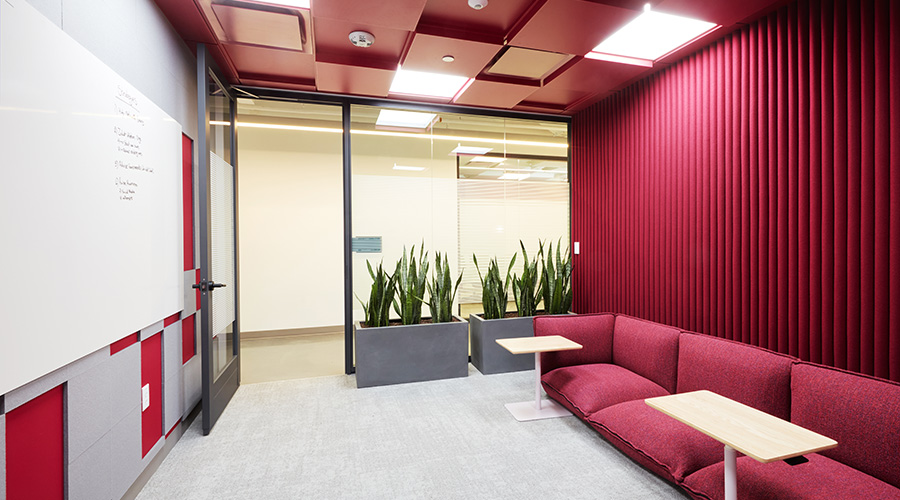 Chris Walinski, building operations manager, Munich Reinsurance AmericaPhoto: Laurie Dewitt, Pure Light images
Chris Walinski, building operations manager, Munich Reinsurance AmericaPhoto: Laurie Dewitt, Pure Light images How Open Office Space Must Address Acoustics, Thermal Comfort
Here's how Chris Walinski helps occupants be productive by making sure they're not distracted by extraneous noise or too hot or too cold.
The last thing Walinski wants to do is inhibit occupant productivity, which poorly designed space can do. The reason Walinski works so diligently to deliver space that makes occupants happy, healthy, and productive, is because he knows that 90 percent of the cost of a building is employee salaries and benefits, according to a study by the Center for the Built Environment. What’s more, the average person spends 93 percent of time indoors. Therefore, Walinski focuses on designing and operating space to prize three main areas of occupant experience — acoustics and thermal comfort.
The cult-classic movie Office Space humorously illustrated most occupants’ concerns regarding acoustics problems in open space. The main character Peter Gibbons must endure the mousy woman in the cube near him repeatedly answering the phone in her high-pitched voice. It’s enough to drive anyone to a life of crime.
In the real world, it is logical to assume open offices are noisier than traditional space with more private offices. But that doesn’t mean they have to be more distracting or negatively affect productivity. For Walinski, several strategies in open office design can mitigate acoustical issues. First, designing space to use aisles as acoustic breaks can help lessen sound reverberating throughout the space. Secondly, he tries to make sure no work areas are near spaces where people gather, like copy machines or the entrance to a cafeteria. Then there are the traditional acoustics strategies of installing noise-reducing ceiling tiles, furniture, and flooring, and also using soundmasking systems to match the frequency of speech to make it less noticeable.
In regards to thermal comfort, Walinski jokes that the traditional solution if two occupants are uncomfortable, one too hot and one too cold, is to have them switch places. Instead, a better approach is to make the space comfortable for everyone. Increasing airflow is one major and reasonably easy way to do that. The reason: Increased airflow, even if the temperature is the same, makes occupants feel more comfortable because they feel the air moving. There’s less of that “stale air” feeling, he says. “When asked their opinion of the change in ventilation, the top response has been that the space feels cleaner.”
Through the extensive use of sensors, Walinski conditions air to target comfort based on the ASHRAE Standard 55 comfort band. “What we are seeing is that the higher airflow, combined with having the temperature and humidity within the comfort band, really makes everyone much more comfortable.”
Related Topics:


















